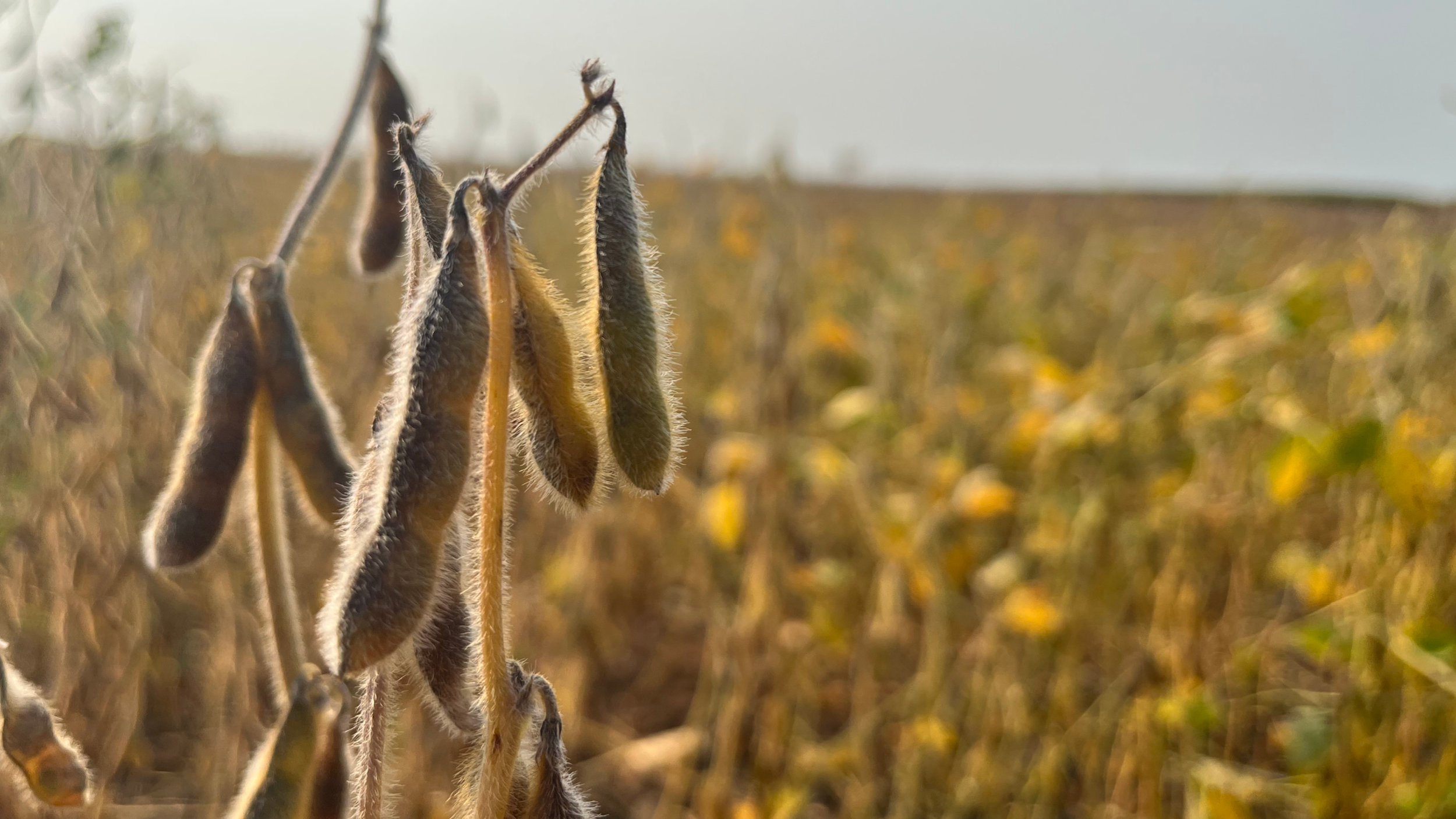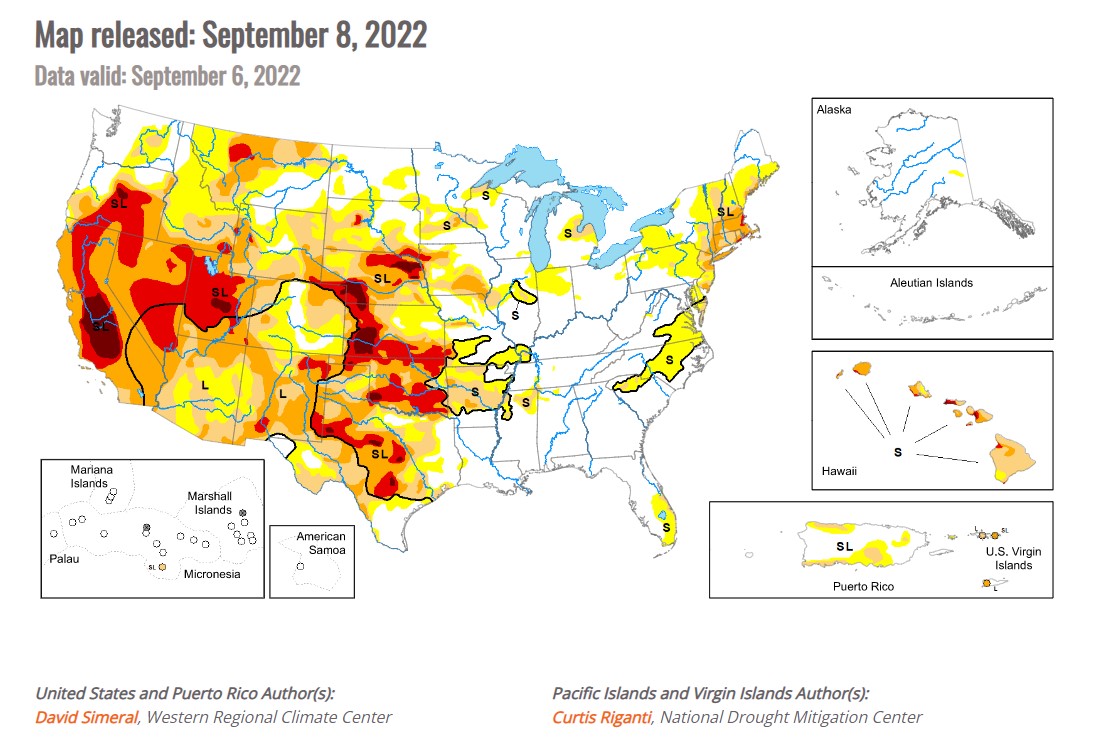
September days are growing shorter, and nights are getting crisper as we approach harvest across the Corn Belt. This likely means long days and nights for farmers throughout the region. The culmination of decisions made during the season will translate to bushels across the yield monitor. This time of year is especially enjoyable to visit the Midwest, with the vibrant fall colors as the backdrop to the hustle and bustle of harvest.
Harvest has already begun for many farmers chopping corn silage for feed. Early indications show that tonnage will be down 20 to 30% in west, central, and southern Iowa as compared to previous years. Producers are seeing the effects of drought across the western Corn Belt that has consumed much of Nebraska, South Dakota, and Iowa. In contrast, managed farms in northeast Iowa, Illinois, and Minnesota received timely rains throughout the growing season and expect above-average yields.
U.S. Drought Monitor
Click the image below to view the interactive drought map.

The drought division line can clearly be drawn across Iowa, running west of I-35 and south of I-80.
According to the September 6th USDA crop condition report:
- 54% of corn is considered good to excellent (down from the five-year average of 62%).
- 15% of corn is considered mature and 63% has dented.
- 57% of soybeans are considered good to excellent (slightly off the five-year average of 61%).
The soybean markets continue to be volatile with many factors contributing across the globe. Soybean prices were elevated this spring due to drought conditions in South America. The Russia-Ukraine war has provided additional upside as production of Ukrainian sunflower oil, a competitor of soybean oil, is down an estimated 30% from last year. China’s economy has slowed, but its soybean demand continues to stay strong. Even if the USDA’s estimate of a record soybean crop does come to fruition, soybean supply will struggle to keep pace with demand.

The Russia-Ukraine conflict also sparked a rally in the corn markets in early spring, pushing prices to levels not seen since 2012. As the war continued into early summer, inflation started dominating the headlines and the corn markets softened. Rainfall also became scarce in June, and the dry weather persisted well into August. Early harvest reports from the southern US are disappointing and it is assumed that the corn crop from Kansas to South Dakota will be poor. There is a growing consensus that yields will be lower than USDA estimates and consequently, corn prices are trending higher again. Even though Ukraine has resumed exporting some corn, millions of bushels from the 2021 crop are effectively stranded, and the 2022 crop is still in jeopardy. By all indications, the global supply of corn will remain exceptionally tight into 2023 and beyond.

Peoples Company Land Managers closely monitor crop markets as we prepare for harvest. Many of our clients have an active interest in the crop through custom farming. The custom model is high risk vs. reward as compared to the traditional cash rent leasing scenario. Custom farming allows the landowner to capture 100% of crop revenue which has become increasingly appealing as commodity prices continue to climb. Crop insurance also provides risk mitigation, setting a revenue floor before the first seed is planted. Most landowners have been able to insure profits vs. mitigating losses over the last two years. The manager and landowner would be responsible for crop marketing, inputs, and agronomic decisions while working with a local operator who provides the machinery and labor to complete field operations. Custom farming gives operators a fixed return and guarantees work without a major investment in operating capital. The custom model is a truly collaborative effort for all parties and offers the highest potential for landowner profitability.
Please call 855.800.5263 or email LandManagement@PeoplesCompany.com if you’re interested in learning more about custom farming or ways Peoples Company can help manage your farmland for sustainability and appreciation.











